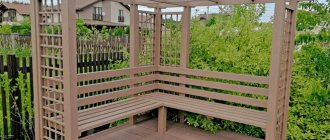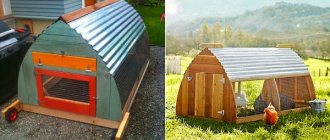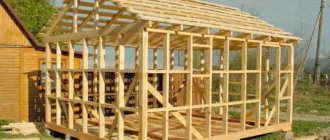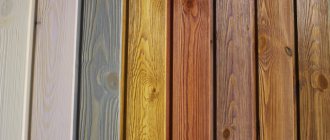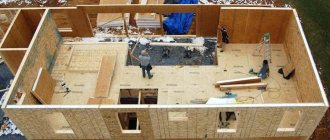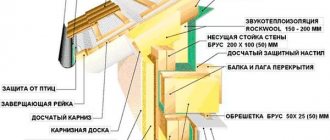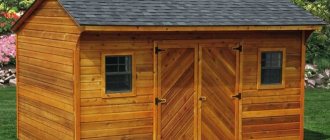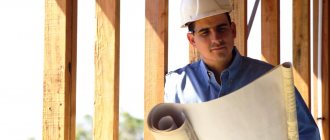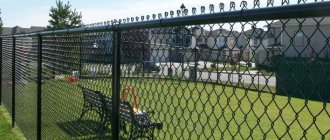How to build a rabbit cage yourself? This question usually arises among beginners who decide to start rabbit farming. Experienced farmers usually develop designs that are convenient for themselves, making it easier to care for animals.
How to build a rabbit hutch
Cells can have different structures and be made from a variety of materials. They are made completely simple or additionally equipped with “conveniences”, such as running water or heating. In the construction of the cage, much will depend on the planned number of rabbits, their breed and size, on the availability of retreat materials and on the place where it will be installed, on the desire and ability to equip it with various devices, as well as on the ability to work with carpentry and plumbing tools.
Recommendations for placement
Depending on the climatic conditions in the region where livestock farming is planned, cages for keeping rabbits can be located directly on the street or in utility rooms. Therefore, taking into account the location of the cells, they can be classified into three types:
- outdoor with insulation - large structures with a canopy made of wood and metal, having two or more tiers. Designed for year-round keeping of rabbits outdoors. It is recommended to place it in places well protected from the wind. The maximum wind speed near the cells is no more than 30 m/s at an air humidity of no more than 75%;
- year-round indoors - frame structures of various sizes made of wood and steel mesh. It is advisable to place it in windproof utility rooms where the air temperature does not exceed 30 °C. To maintain the activity of the animal, good lighting must be provided in the room to extend the daylight hours. For young animals this figure is at least 10 hours, for adults - 8–10 hours;
Portable single-tier cage for rabbits using Mikhailov technology
- combined structures - lightweight frame cages made of metal and wood. In the warm season, the cells are taken outside, and in the fall and winter, when the temperature drops below 0°C, they are brought into a barn or other room. In summer, it is advisable to place the cages in a shaded place, protected from rain. In winter, the cages are placed against a blank insulated wall in the selected room.
Some owners have two types of cages at their disposal. Some are always located in the utility room and have a convenient mesh bottom system that allows for quick and convenient cleaning. The latter are erected along a fence or wall of a building and are a winter option with a canopy.
This option has a lot of advantages, but is not available to all breeders, since keeping a large number of animals requires a considerable area of land. Therefore, for most people living in central Russia and trying their hand at animal husbandry, it is recommended to keep rabbits exclusively on the street.
Keeping rabbits outdoors all year round allows the animals to develop immunity to various infections and diseases. And fresh air also has a beneficial effect on the formation of healthy and lush hair.
Materials for production
How can you make a cage with your own hands, and what material is needed for this? The question is of paramount importance, but the answer is quite simple.
The choice of material for the manufacture of cells is largely of the same origin. Therefore, to make a cage at home, materials such as:
- wooden beams;
- wooden boards;
- plywood;
- fine mesh, preferably galvanized;
- plastic for appearance;
- a piece of slate or tile (the roof of the cage, if it will be located outside, in the open air).
In two or more rooms
The number of premises is calculated in separate sections. Typically, two rooms are used, which include a nest and a walk.
Home maintenance will definitely require more space. The rabbit will spend most of its life in a pen, which will be much shorter if the pet is unable to lead a full-fledged lifestyle.
Most often, a lightweight manufacturing option is used, which is given here as an example.
They make a frame for the entire cage, which on average should be at least two meters in length, 70 cm in width, and 80 cm in height. The frame can be made from either wooden planks or metal wire, which, if possible, is welded in junction places. In addition, the wire can simply be bent in the corners or twisted with a spring for greater reliability.
Partitions with holes are installed, the floor is laid and a nesting compartment is constructed.
The body base is wrapped with mesh. It can be welded or tied using the winding method in those places where it connects to the strips or to the mutually perpendicular winding web.
A slot is made in the desired area and the door is mounted.
Even though you are making a cage for home use, it is important to note that drawing notes on complex calculations associated with detailed measurements of the pet and schematic images of rabbit pens should not be neglected.
Drawings of cages for rabbits are important because they allow you to visualize the structural object and freely adjust dimensional values.
Auxiliary tool
To make a cell, material alone is not enough. To fashion a beautiful and reliable cage out of it, you need to stock up on auxiliary tools. These include:
- hand saw;
- pliers;
- hammer;
- ruler or tape measure;
- wood planer;
- perforator;
- a set of screwdrivers (from small to large sizes);
- a piece of sandpaper;
- nails;
- wood screws;
- corner.
Read here DIY garden figures - features of application, lighting and decoration (80 photos)
Keeping rabbits
Before you make a cage for rabbits, you should clarify who exactly will be kept in it. Its dimensions and the requirements for the design will depend on this.
There are some options:
- single-seat structures;
- cages for group housing of young animals;
- rabbitry for a female rabbit to live with her offspring.
Each of the above options has its own requirements.
Protecting yellow furballs
Making a chicken cage with your own hands is not that difficult. And the cage for these yellow fluffy balls is not just a home where they spend the night or wait out bad weather. It is also a natural shelter from all kinds of predators who certainly want to snack on such tasty prey.
A cage for chickens can be built both in a stationary form and in a portable one (it all depends on the number of wards).
It is recommended to connect lighting and heating inside or outside the “bird house”. If the cage is made to be displayed outside, then it is necessary to make a canopy for the birds from slate tiles, so that in case of rain they do not have to carry it back and forth.
The cage for chickens can be of completely different sizes, since it all depends on the number of wards. If there are few of them (5-12 pieces), then it makes sense to make the cage simple and unpretentious.
The most common option is a cage with several tiers. Its advantage includes a large number of advantages:
- Do-it-yourself windmill - the best ideas and instructions for building decorative windmills in the garden and on the site (105 photos)
Do-it-yourself walk-behind tractor - how to make a simple and reliable homemade walk-behind tractor for farming (105 photos)
Grafting an apple tree: how and when correctly, grafting methods
- long-term operation;
- easy care;
- ability to hold a large number of heads;
- effective protection from predators;
- reduction of disease levels among chickens;
- purchasing materials for construction will not be difficult;
- building materials do not have exorbitant prices;
- The construction of a cell of this type is extremely simple.
As a rule, the manufactured cage is most often installed on special supports, which creates a large distance between the bottom and the floor, which in turn makes it difficult for predators to gain access.
Instructions for making a cage from plywood:
- cell size determination;
- cutting out two identical side walls from plywood;
- production of parts for the rear wall and roof;
- connecting all parts into a single wooden sheet;
- production of a galvanized wall, fastening to the general frame of the cage;
- installation of the roof (it is best to make it in a folding version using hinges);
- installing the cage on specially made supports;
- pallet installation.
In this case, you can also make a tray for the cage with your own hands. A piece of wood is taken and the middle is planed out. This creates something like a small trough.
Classification of structures
Based on the area allocated for the rabbitry, cages are divided into single-tier and multi-tier. When drawing up a scheme, the chosen method of maintenance is taken into account, for example, a mini-farm, a Zolotukhin cage. Standard indicators are laid down at the design stage when calculating the drawing, so 0.5-0.7 sq.m is allocated for one female rabbit, 0.17 sq.m for a male, and 0.12 sq.m for young animals.
Single-tier
The simplest design to implement. The optimal size for adult rabbits is 150x70x70 cm, the front wall is 10-15 cm higher than the back wall. Taking into account the difference in height, the roof turns out to be sloping. When changing parameters, the length is reduced, leaving the height and width unchanged. The internal space is divided into compartments connected by manholes.
To maintain hygiene, the sections have a mesh floor, which allows waste to fall into a tray placed below. Feeders and water supply devices are kept clean; this is achieved by hanging or retractable mounting of equipment. When housing, females and males are housed separately, since mixing of sexes leads to uncontrolled reproduction and competition. There are rooms for adult and young rabbits. Enclosures are set up individually for different species.
Two-story
A two-tier cage is used for indoor and outdoor placement; at each level the number of compartments is different. The tiered design is considered the best for keeping a large number of rabbits by saving space, simplifying care and monitoring of animals.
The method of constructing a two-story cage does not have significant differences, the parameters are 2-2.5 m in height and 1.5 m in width.
With all the variety of characteristics, in order to build a durable, comfortable home, they follow the general instructions, which are adjusted based on the breeding goals.
Other types of structures
Among rabbit breeders, enclosures made using the original author’s method are popular. These solutions include:
- Zolotukhin cell. It's a little more complicated to make than usual, if you follow the construction manual step by step. The difference lies in the absence of a pallet, the sloping floor is made of slate or waterproof plywood, the floor grid 15-20 cm wide is present only on one side. Waste is removed due to the stepped position of the compartments. It is better to start building with simple options and move on to more complex ones.
- Rabbit cage designed by Mikhailov. Helps to produce numerous healthy offspring without labor-intensive care. The basis of a shed structure is a barn containing a large number of sections arranged in tiers. Half of them are occupied by females, the rest are inhabited by males and young animals. Inside, a natural environment is imitated, which promotes reproduction. Excrement collection is automated.
- Cage with an aviary for walking. Includes two compartments and an attached walking area. The enclosure is made of a frame covered with mesh and located on the illuminated side. The animals have the opportunity to move in the fresh air, which has a positive effect on their well-being and appearance.
- Family cage. Used for breeding purebred rabbits, calibrating them according to the necessary characteristics. A male is placed in the center of a three-section room with two females on the sides. The compartments are connected by manholes, which are opened one by one.
- Cage for breeding. It consists of two combined enclosures and a mobile queen cell for keeping pregnant rabbits.
- Cage for young animals. Designed for rabbits older than three months. Sections are built in one tier for the expected number of animals, taking into account the specifics of organizing group feeding. Outdoor enclosures are insulated with hay and heat insulation.
- Cage for adult rabbits. Males of reproductive age are provided with individual quarters, since same-sex animals do not get along well together, causing fights.
- Cage for a giant rabbit. Representatives of the breed weigh from 5.5 to 7.5 kg with a length of 55-65 cm or more. They require rooms with increased dimensions of 120x80x60 cm, reinforced with sheet metal.
- Cage for Californian rabbits. The size of an individual of this species is 45-50 cm, weight is about 5 kg. The compartments are built in one or several tiers, with 0.5 square meters allocated per animal. m. The bottom is covered with a mesh with a rod diameter of 3 mm.
- Cage for a dwarf rabbit. The breed was bred to be kept in an apartment. For a pet that is always under lock and key, choose a housing of 40x85 cm; if the animal only spends the night in a cage, you can take a smaller enclosure with minimum dimensions of 40x70 cm. Individuals of dwarf breeds weigh up to 2 kg, decorative ones up to 5 kg, the cage is selected taking into account the size of the animal.
- Cage Ferplast Grand Lodge. On the second level there is a place for relaxation, below there is space for games and eating. To maintain cleanliness there are two retractable trays and hinged doors. The set includes ladders, a drinking bowl, a bowl and a hay barn.
- Rabbitax cell. Has a special air flow control system. It looks decorative, but is expensive if you make it yourself.
Mikhailov cells
Be sure to read the article on cage sizes for rabbits, where you will also find drawings of different options.
Features of winter cells
In an insulated room, rabbits can withstand temperatures down to -20 °C. Thermal insulation is created using modern materials.
To save money, you can make do with improvised means, such as pine needles, thin twigs, moss, and foliage.
A 3 cm thick heat insulator is placed between the walls. Cold affects the fertility of animals, to prevent a decrease in the ability to reproduce, they organize additional lighting and install heating elements to the rear wall. An artificial increase in daylight hours has a beneficial effect on the activity and reproductive qualities of animals. During the cold period, rabbits are given high-calorie food, increasing the content of concentrates and roughage.
Cages for rabbits
The female rabbits are kept in a separate spacious enclosure, consisting of the main and uterine compartments. It can contain up to four individuals; at first, females are housed together with their offspring. The queen cell looks like a closed compartment with an inlet and an additional door on the side for cleaning; the inside is lined with dried hay or shavings. In winter, they are heated with an electric heating pad, a lamp or a heating cable laid under a removable floor panel. The uterine sections are made portable and installed in different cells.
One of the popular breeds for breeding, the chinchilla, has become widespread due to its undemanding conditions of keeping and the profitability of cultivation. Both beginners and experienced rabbit breeders are involved in breeding animals of this species.

